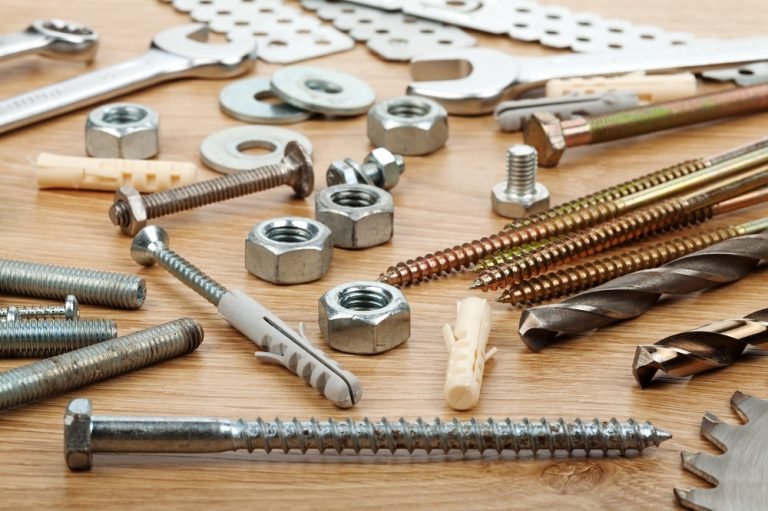Wood Screws are not just one thing. There are many types of screws. Two types of screws are more difficult to determine: sheet metal screws and wood screws.
Only One Thread
The main difference between wood screws and sheet metal is that one can be used for wood while the other can use for sheet metal. But how do they differ?
They look almost identical at first glance. Both come in the same heads: round, flat, oval, and with Philips, straight, or square driver slots. How do you tell the difference?
The thread is the difference. Wood screws are more comprehensive and have a medium-depth screw. Heavy-duty wood screws with a longer length often have a threadless shank. Sheet metal screws have a thread that covers their entire length and has a tighter, sharper thread.
These screws can’t be interchanged. If you are in a pinch and don’t have suitable screws, you can use a metal sheet to attach to wood. The opposite is true. However, wood screws will not form tight enough joints when used on sheet metal, especially if they have thread-less shanks.
For DIY Projects, Metal Screws Vs. Wood Screws
Although they may be similar in utility and function, the wood and metal screws have distinct properties that make them stand out for their respective roles.
Metal Screws: Uses
Metal screws are different from wood screws in the way they look and function. They have design elements that are geared towards fastening metal-based and hard plastics.
These self-tapping screws attach sheet metal to metal or plastic, wood, fiberglass, or other materials. Metal materials rarely come pre-drilled with holes. Sometimes, it is necessary to use screws that can make their pilot holes.
The earth auger drill bit can penetrate thin metals easily and give a firm hold by cutting their threads. Metal screws can withstand the strain of holding heavy metal pieces together for an extended time.
To maximize grip and secure the connecting pieces, a metal screw is fully threaded. Metal screws can connect any material to base metal, whether plastic, fiberglass, or wooden. These hole cutters can use to attach hinges and brackets as well as other types of hardware.
Wood Screws: Uses
While wood screws can compare to metal screws in specific ways, their unique characteristics serve a particular purpose. Wood screws can use to fasten the plywood, lumber, and other wood materials, as their name suggests.
Wood auger bits are ideal for working with soft materials due to a few design features. It makes them very useful in woodworking applications.
Wood screws can be threaded only in part so that you can connect two pieces of wood more securely and with minor damage to the attached wood piece. They might not be strong enough for heavy loads.
Shank Of A Wood Screw
The shank is at the center of the screw. The shank is the center of the screw. It’s kind of like a nail. The shank serves many functions and is the backbone of the screw.
Can Withstand Stress
Creates length. The screws for wood need to be long enough to hold an equal amount between two boards. Too short? All fall apart. Too long? Too long?
Have you ever wondered why some auger drill has a top that doesn’t have threads? Here are the reasons. You want the screw to pull together the boards when you drill them into each other. It won’t happen if the entire shank has threads. The screw will work against you.
Understanding Wood Screw Terminology
It can be like going to a library to look at the screws section in a hardware store. This article will show you how to read the signs and choose the right wood screw for your project.
These Are Some Terms That You Will Need To Be Familiar With:
The gauge for a screw is referred to the thickness of the minor diameter of the shank. The shank’s diameter, which includes the thread, is the primary diameter.
Both are important, but the primary diameter will affect the screw’s toughness. The thicker the glass drill bits, the larger its number. The length of a wood screw is usually expressed in inches.
The size of your screw should be sufficient to allow for equal shaft length in the top and bottom boards without the tip breaking through on the other side.
Pitch for a wood screw:
This tile drill bit refers to the number of threads per inch. A softwood screw will have fewer threads per in or a lower pitch, while a hardwood screw will have more great threads per in or a higher pitch.
Although this number is not always printed on the box. It will usually indicate whether the screw was made for hardwood or softwood.
Summary
This guide to wood screws and holesaws has hopefully been helpful. Metal screws are best if you’re attaching sheet metal. These screws are much easier to drive into metal and offer greater strength and security. Wood screws, on the other hand, are more suitable for applications that involve plywood, lumber, or other wood materials. Self-tapping with a hole saw cutter is possible, but not with wooden screws.


